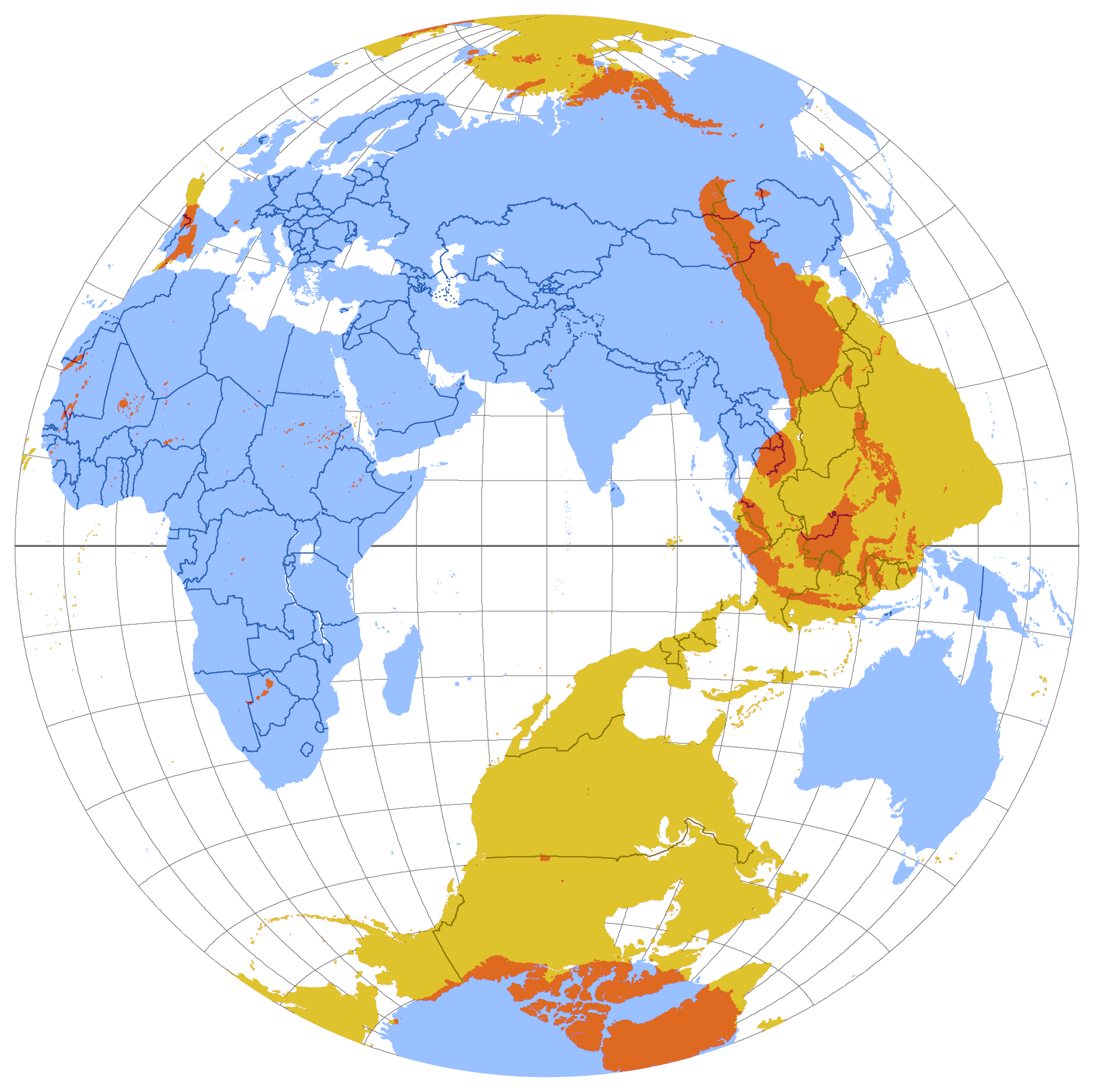Mark Grosch, one-time Geography Staff Researcher for Reg Golledge and now an Adaptive Technology Specialist with the Disabled Students Program, recently drew our attention to the Map Tunneling Tool, available at Freemaptools.com. The “map you can make use of” is an antipodes map. “An antipode of a point on the earth is the region on the Earth’s surface which is diametrically opposite to that point. The two points which are antipodal to one another are considered to be connected by a straight line or tunnel through the center of the Earth” (freemaptools.com; op. cit.).
Antipodes–“The word derives from the Greek words for “opposed” (anti-) and ‘foot’ (pod or pous), or under the feet, opposite. Later on, the Latin usage changed its meaning to ‘those with feet opposite,’ a race of people with feet sticking out of their heads, or people who were inverted and walked on their hands with their legs sticking up in the air, which is what the population on the other side of the world was imagined to be doing. These were common mythical creatures that mediaeval map makers often drew in unknown places to fill up the space. These up-side-down people living at the opposite side of the earth were known as Antichthones. […] They took their place on mediaeval maps and marginalia right next to the dog-faced race and the sciapods! ‘Yonder in Ethiopia are the Antipodes, men that have their feet against our feet.’ (from the earliest usage in English of the word Antipodes, from a 1398 translation of Bartholomew of England’s “The Properties of Things,” a kind of proto-encyclopeadia in 19 volumes written in Latin in 1240)” (source).
“An interesting thing about the antipodes is that the concept was recognized by the ancient Greeks (Plato, Aristotle, Plutarch, Strabo, and Diogenes), demonstrating their understanding of a spherical world. In contrast, the early Christians found the idea of antipodes to be absurd, requiring a belief that people in the antipodes were inverted, because, of course, being on the other side of the world and all, they couldn’t possibly stand on their feet like we do! Popes and clergy declared the very notion of antipodes to be heretical, because it would require a belief that, since all people descended from Adam and Eve, descendants of Adam and Eve would have had to have gotten in a boat and traveled over seas to the southern lands, (which were not even known in those times with any certainty to exist). From the point of view of scriptural inerrancy, the fact that the Bible doesn’t mention anything about this at all means that it could not be possible” (Ibid.).
“Although it seems strange that our antipode is an iceberg in the middle of an ocean, actually it is about what we would expect. After all, over 70% of the earth’s surface is covered by ocean, and the land masses of the southern hemisphere are particularly skimpy. So the antipode of just about anywhere in the northern hemisphere is likely to be in the middle of the ocean. Less than 4% of the earth’s land masses are antipodal to land” (Ibid.).
“Playing antipodes produces amusing pairings. Bermudans would still enjoy sea breezes by Perth, Australia, but climate shock would await Timbuktu’s desert dwellers, who’d come up near tropical Fiji. And as one player says, Imagine the disappointment of someone digging their way out of Siberia and ending up in Antarctica” (source). Mark Grosch, another “player,” takes it a step further: “Notice that the current search area for the Malaysian Air flight is the antipode of the Bermuda Triangle.”





